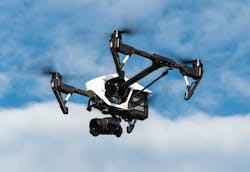On Monday, the FAA announced two final rules for UAS. The new rules will require Remote Identification (Remote ID) of drones and allow small UAS operators to fly over people and at night under certain conditions.
According to the FAA, Remote ID will help mitigate risks associated with expanded drone operations, such as flights over people and at night. Both rules also support technological and operational innovation and advancements.
“These final rules carefully address safety, security, and privacy concerns while advancing opportunities for innovation and utilization of drone technology,” U.S. Secretary of Transportation Elaine L. Chao said at the time of the announcement.
Remote ID provides information such as the identification of drones in flight, as well as the location of their control stations, to national security agencies and law enforcement partners in the U.S.
The Remote ID rule applies to all operators of drones that require FAA registration. There are three ways to comply with the operational requirements:
- Operate a standard Remote ID drone that broadcasts identification and location information of the drone and control station;
- Operate a drone with a Remote ID broadcast module (may be a separate device attached to the drone), which broadcasts identification, location, and take-off information; or
- Operate a drone without Remote ID but at specific FAA-recognized identification areas.
The ability to fly over people and moving vehicles varies depending on the level of risk a small drone operation presents to people on the ground. Operations are permitted based on four categories, which can be found in the executive summary accompanying the rule. Additionally, this rule allows for operations at night under certain conditions.
The final rule requires that small drone operators have their remote pilot certificate and identification in their physical possession when operating, ready to present to authorities if needed.
Both rules will become effective 60 days after publication in the Federal Register.





